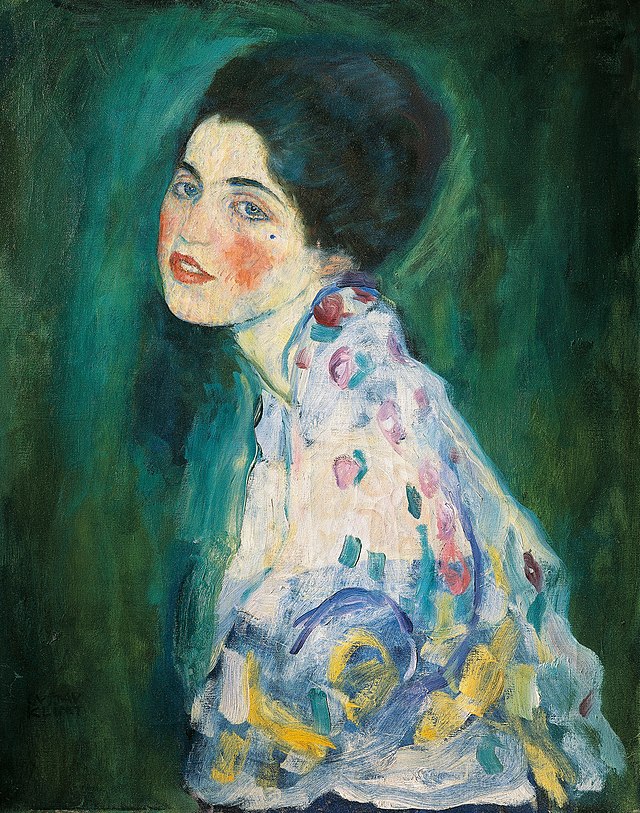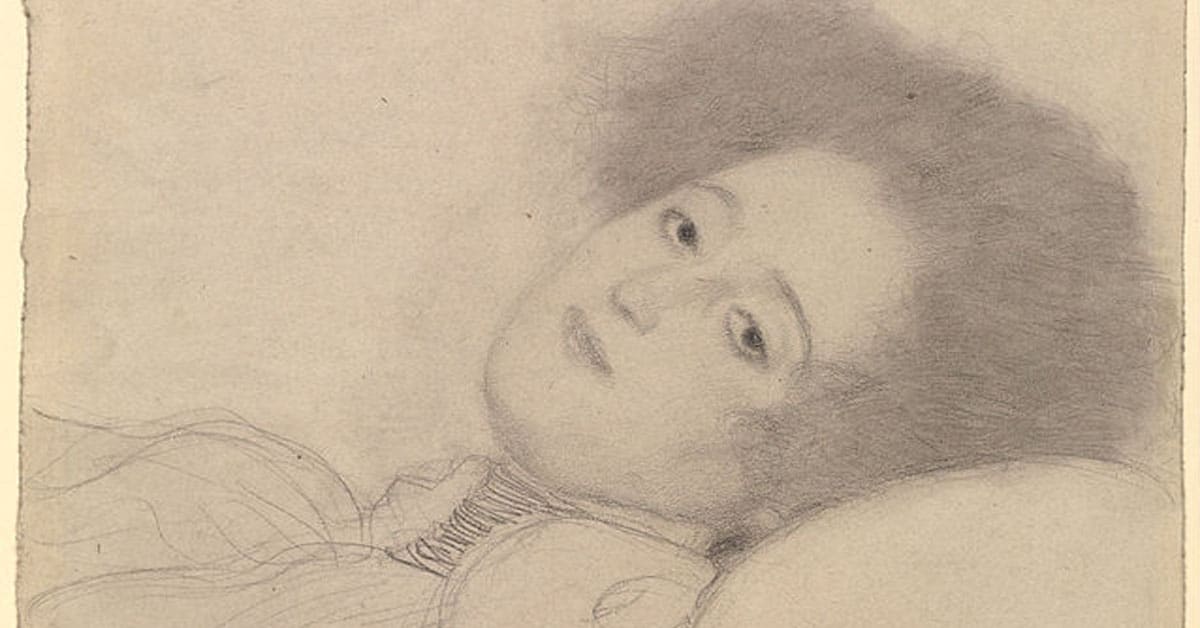Though a figure of controversy during his life, Austrian artist Gustav Klimt remains one of
the most significant characters in art history to this day. Celebrated for pieces including The
Kiss (1908 – 09) and Adele Bloch-Bauer I (1907), Klimt is also remembered for his bold
refusal to adhere to Austrian society’s conservatism, and his insistence on privileging the
female form.
As a recurring motif throughout his work, Klimt used the female body – which was
frequently naked – in order to highlight the importance of sensuality and sexuality in his
work. Klimt’s Portrait of a Young Woman (1896-7) shows a clear appreciation of the female
figure, but is less overtly sexualized than later artworks, many of which caused scandal and
outrage for their explicit depiction of erotic liaisons.
Klimt’s background
Trained in classical realism at the Vienna School of Arts and Crafts (the
Kunstgewerbeschule), Klimt used his skill in order to expand upon and trouble norms of the
day, embracing more a controversial and at times inflammatory artistic practice as his
career developed.
In 1894, Klimt had been commissioned by the University of Vienna to produce three ceiling
paintings – Philosophy, Medicine, and Jurisprudence. The scandal produced by these pieces
rocked Viennese society on their revelation, and Klimt was widely criticized and reviled for
what was seen as the paintings’ celebration and embrace of pornographic aesthetics.
Undoubtedly, the outrage generated as a result of the three University of Vienna paintings,
as well as Klimt’s overall sense of frustration with the Austrian art world, led to him
abandoning membership to Vienna’s premiere society of artists (the Association of Austria
Artists, or Kunstlerhaus). Foregoing this position enabled Klimt and a number of other
contemporary artists and designers to co-found the Vienna Secession on 3 April 1897, with
the aim of providing a space for radical, controversial young artists to exhibit their pieces
and engage in an exchange of knowledge and artistic practice. It was during this tumultuous
time that Klimt created Portrait of a Young Woman (1896-7).
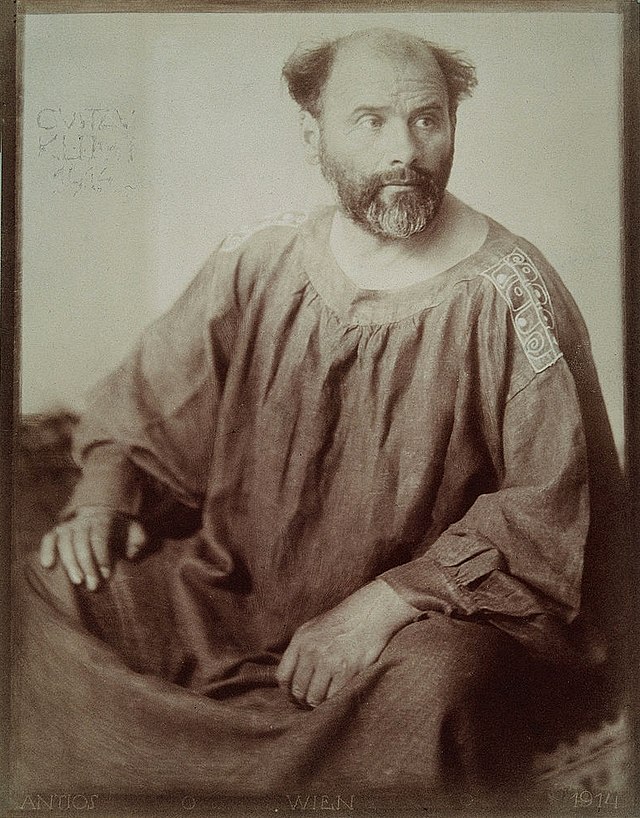
Portrait of a Young Woman (1896-7)
The piece Portrait of a Young Woman (1896-7) is a drawing. It shows a young woman
looking over her left shoulder, allowing her to lock eyes with the viewer. Her body faces
forward but bends back somewhat sinuously to allow her to make this eye contact.
Her clothing is sketched with a degree of detail – she is wearing a long, flowing dress, which has some ruffling around the sleeves and neck area. Her hands are clasped in front of her body, but they are not drawn in a great degree of detail.
Klimt has paid most attention to the woman’s face and hair, which are detailed with some coloring, unlike the rest of the drawing. Dark pencil is used to detail her hair, which is thick and voluminous, reaching to her shoulders, and falling over away from her face on the right side as a result of its tilt.
Her eyebrows and facial features are drawn in detail with dark pencil. Her left eye is particularly dark and gazes intently at the viewer. Her nose is straight and well-defined, and her lips are thin. Although her expression is not melancholy, she nonetheless appears stately and poised, without much softness or sentimentality. The lack of color lends Klimt’s Portrait of a Young Woman (1896-7) a gloomier, heavier atmosphere, emphasizing the contrast between the lightly-sketched body and clothing, and the more detailed facial features.

Portrait of a Young Woman (1896-7) and other Klimt artworks
Half Figure of a Young Woman (1918)
A late artwork, Klimt’s Half Figure of a Young Woman (1918) shows a woman’s head, with braids either side, tilted towards her right shoulder. Her face is serene and composed, and her eyes are closed.
Drawn in graphite, Half Figure of a Young Woman (1918) is one of Klimt’s many drawings of female figures, forms, and faces. The tilt of the young woman’s head, in combination with her expression, resonates with his earlier, more famous painting The Maiden (1913), but has most affinity with Klimt’s unfinished 1918 painting The Bride.
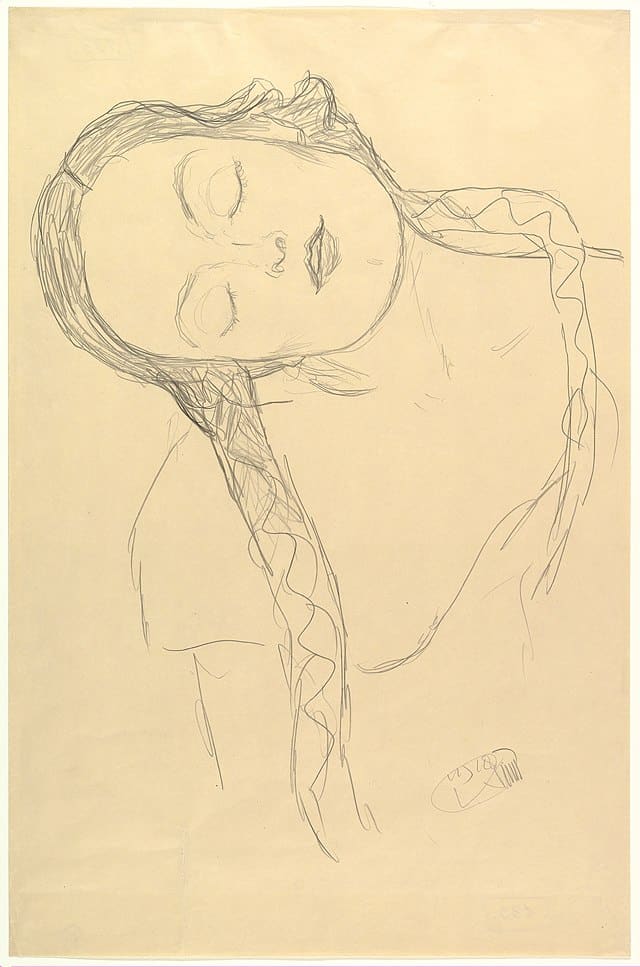
The Bride (1918)
The Bride (1918) shows a number of forms and is a three-part composition that celebrates and emphasizes the female form and what Klimt perceived as its alignment with sensuality.
To the painting’s left is a bride symbolizing female seduction, whilst the figure to the furthest right is a semi-naked female form. The middle figure of The Bride (1918), meanwhile, embodies and evokes innocence. The left-leaning tilt of the head, the blissful expression with its full lips and closed eyes, and the braids worn by this figure suggest that Klimt’s Half Figure of a Young Woman (1918) may have been an early study for this painting, as the two images are undoubtedly linked, such is their similarity.
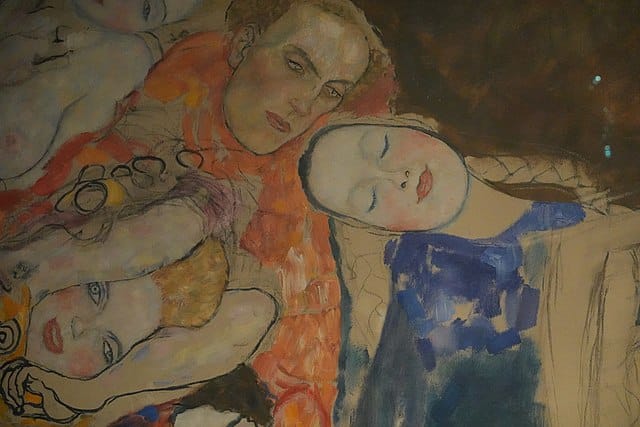
Portrait of a Lady (1917)
Though it was created many years after Portrait of a Young Woman (1896-7) and only a year
before Klimt died, Portrait of a Lady (1917) nonetheless has a kinship with the older piece.
Both artworks place particular focus, for example, on a female figure looking over her
shoulder toward the artist.
Known anecdotally as the world’s most famous stolen painting, Portrait of a Lady (1917),
the true history of the artwork has only been discovered as recently as January 2020.
Having initially been purchased only eight years after its creation in 1925 by Giuseppe Ricci
Oddi, the painting was kept in his own private collection until its theft in February 1997.
Thereafter, the Klimt painting was believed lost. However, in late 2019, a gardener found a
black refuse sack in a crawl space in the grounds of the Galleria Ricci Oddi – the very
location from which the painting was initially stolen. Investigations by experts confirmed
that the painting was the very same Klimt artwork that had been stolen in 1997.
A further twist to the tale came with art student Claudia Maga’s revelation that Portrait of a
Lady (1917) was in fact a double painting. Klimt had painted over another piece, Portrait of
a Young Lady, which had not been seen since 1912. Maga made this connection by noting
the similarities in the posture and facial structure of both figures – notably, the tilt of the
woman’s head over her left shoulder, which itself has parallels with Klimt’s earlier piece
Portrait of a Young Woman (1896-7).
Having persuaded the Galleria Ricci Oddi to X-ray the artwork, Maga’s suspicions were
confirmed: Portrait of a Lady (1917) had been painted over the earlier Portrait of a Young
Lady. The earlier portrait showed a young woman with whom Klimt had a particular affinity,
who had died suddenly. In his rage and grief, Klimt painted over the first piece. He
successfully removed the hat and shawl worn by the ‘young woman’, but the similarity in
expression remained between the pieces.
Its history and the fact that it is Klimt’s only ‘double painting’ have contributed to the overall
value of Portrait of a Lady (1917), which is estimated to be at least $66million.
